A very important step in analyzing keywords is to identify what kind of page you’ll need to create in order to maximize your chances to rank. And if you can use that page to target a group of relevant keywords all at once. Or perhaps create a few additional pages to target some of the keywords individually.
Let’s explore how you determine those things.
1. Identify the Parent Topic
Let’s say that you’ve got the following keywords on your list:
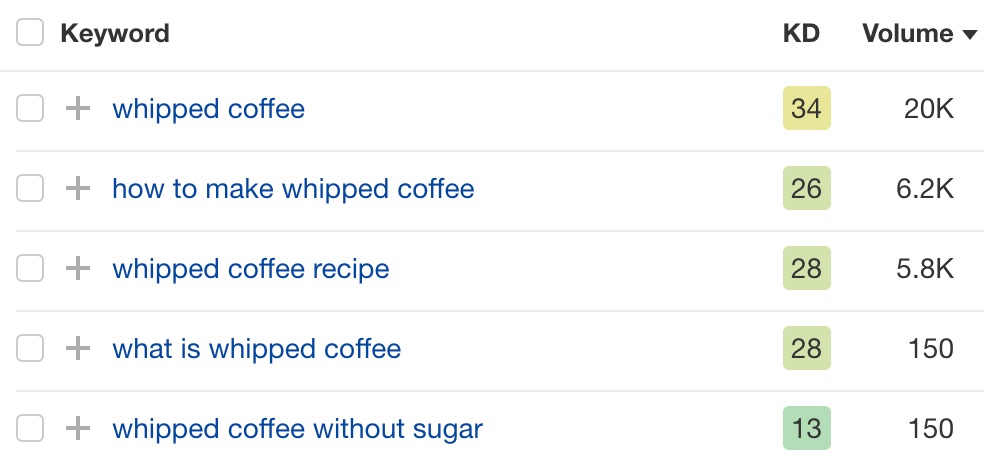
All of these search queries seem to be talking about the same topic: “whipped coffee.” But does that mean that a single page can rank well for all these keywords? Or perhaps you’ll need to create individual pages to target each of them separately?
The answer largely depends on how Google sees these keywords. Does it see them as part of the same topic? Or does it see them as individual topics?
You can get a sense of this by searching for each of these keywords one by one and comparing the search results. For example, let’s compare the search results for the keyword “whipped coffee” with those of the keyword “whipped coffee recipe”:
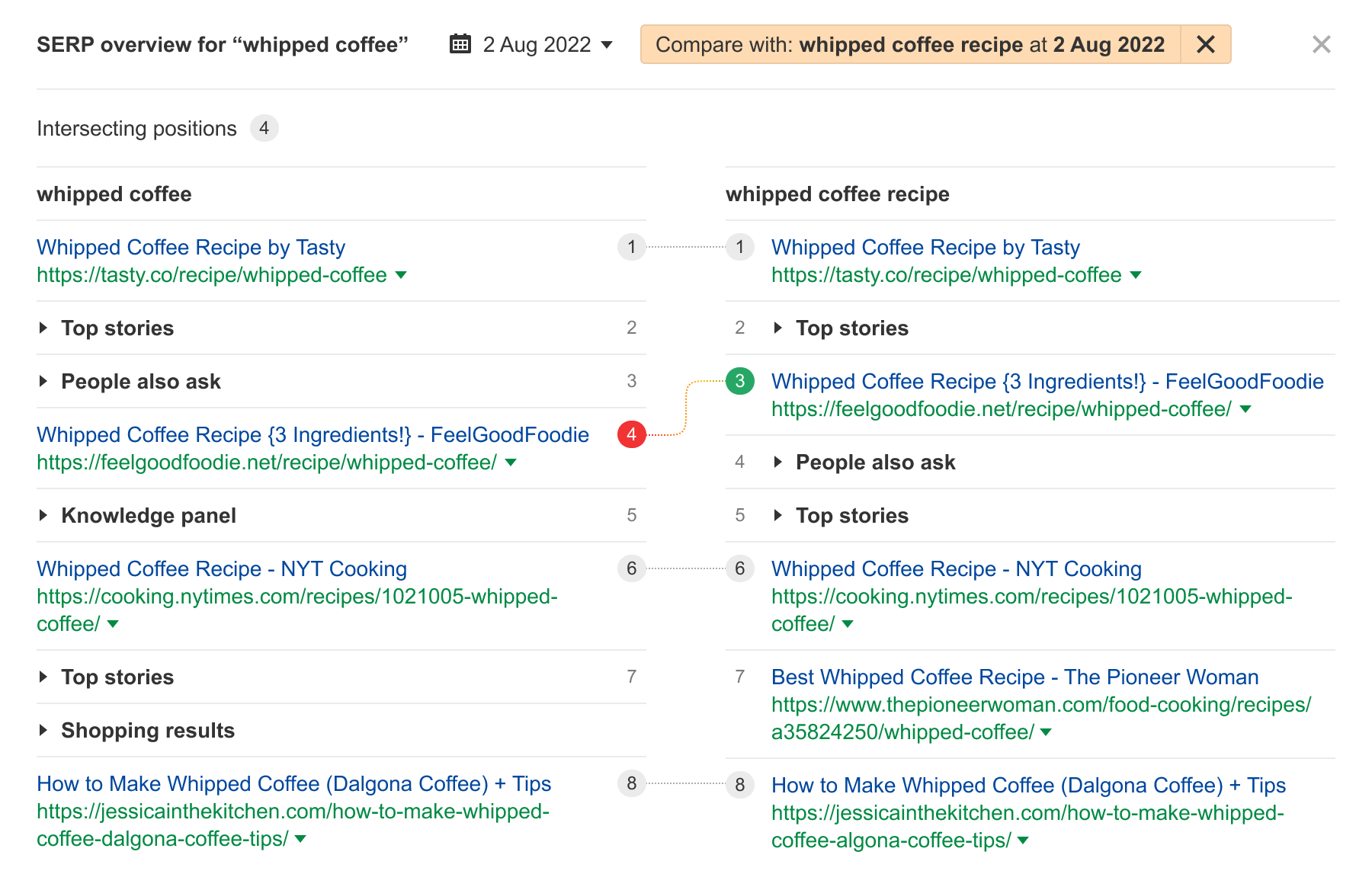
The top-ranking pages for both keywords are nearly identical. This means that Google sees the search query “whipped coffee recipe” as a subtopic of a more general query, “whipped coffee.” So you can rank for both keywords with a single page.
Now let’s compare the search results for “whipped coffee” with those of “whipped coffee without sugar”:
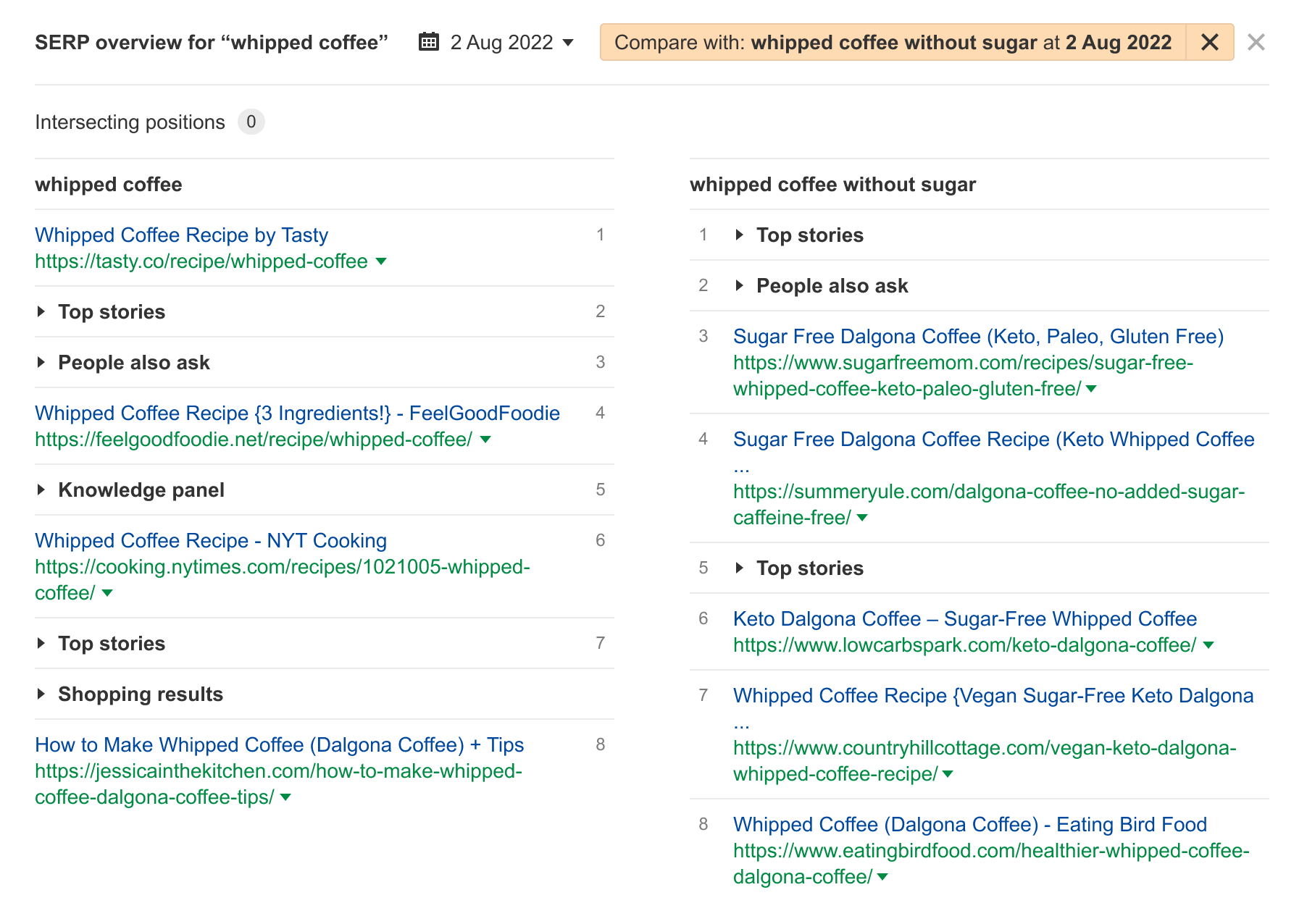
This time, there’s absolutely no crossover between the two SERPs. That means that “whipped coffee without sugar” isn’t part of a broader “whipped coffee” topic. Or at least Google doesn’t think so. Which means that you’ll need to create two separate pages if you want to target both of these keywords.
Comparing the search results for seemingly related keywords is a great way to understand how closely related they are and if you should target them with one page or multiple pages. But doing this for hundreds of keywords can be a rather daunting task.
That’s why we developed a handy feature in Keywords Explorer, which helps you to identify if a keyword you’re looking at is a part of a broader topic or, rather, deserves a dedicated page of its own.
We call it the Parent Topic.

The way we identify the Parent Topic of a keyword is very simple. We take the page that ranks #1 for that keyword and look up if there’s a more popular search query that it gets search traffic from.
So for the keyword “whipped coffee recipe,” we have identified that its top-ranking page is also ranking at the top for a more popular keyword, “whipped coffee.” Which isn’t the case for the keyword “whipped coffee without sugar.” It turned out to be a Parent Topic to itself.
The Parent Topic functionality is extremely helpful for grouping large lists of keywords into the so-called topical clusters. But we don’t recommend that you follow it blindly. And here’s why.
In the screenshot above, Keywords Explorer says that the search query “what is whipped coffee” is a subtopic of “whipped coffee.” Which means that you don’t need to create a dedicated page if you want to rank for it.
But let’s take a look at the top-ranking pages for the “what is whipped coffee” keyword:

Right at position #3, we see a page that is optimized precisely for targeting that specific search query “what is whipped coffee.” While the pages above and below it are actually targeting a more general term: “whipped coffee recipe.”
Thus, if you feel that a certain subtopic may actually deserve a dedicated page of its own, just take the risk and go for it! It may very well pay off.
2. Study the search intent
Let’s say that you have the following keywords on your list:
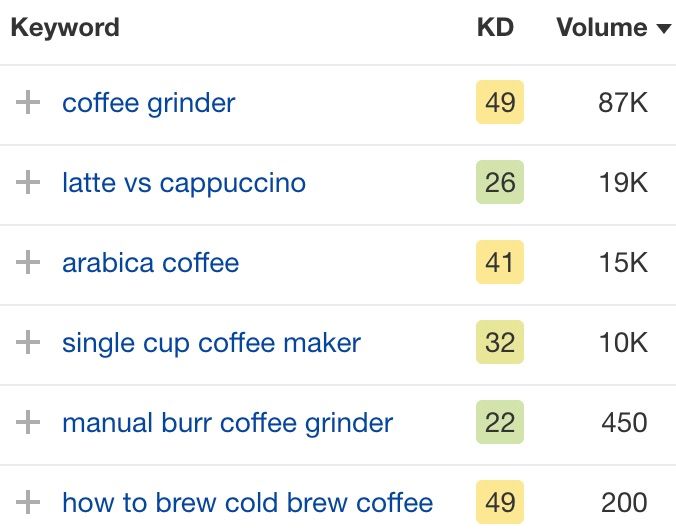
Now you need to understand which should be best targeted with informational blog articles and which should be product or category pages.
For some keywords, this is obvious. You wouldn’t create a product page for “how to brew cold brew coffee” because searchers are clearly looking for a tutorial.
But what about a keyword like “arabica coffee”? Do searchers want information, or do they want to buy some? In SEO, we call this studying the search intent.
Google, presumably, has some ways of identifying what exactly searchers want to see for any given search query. And whatever page satisfies the search intent best tends to float to the top of the search results. So the way you determine the search intent behind some keywords is by looking at the top-ranking pages.
Let’s look at the SERP for “arabica coffee”:
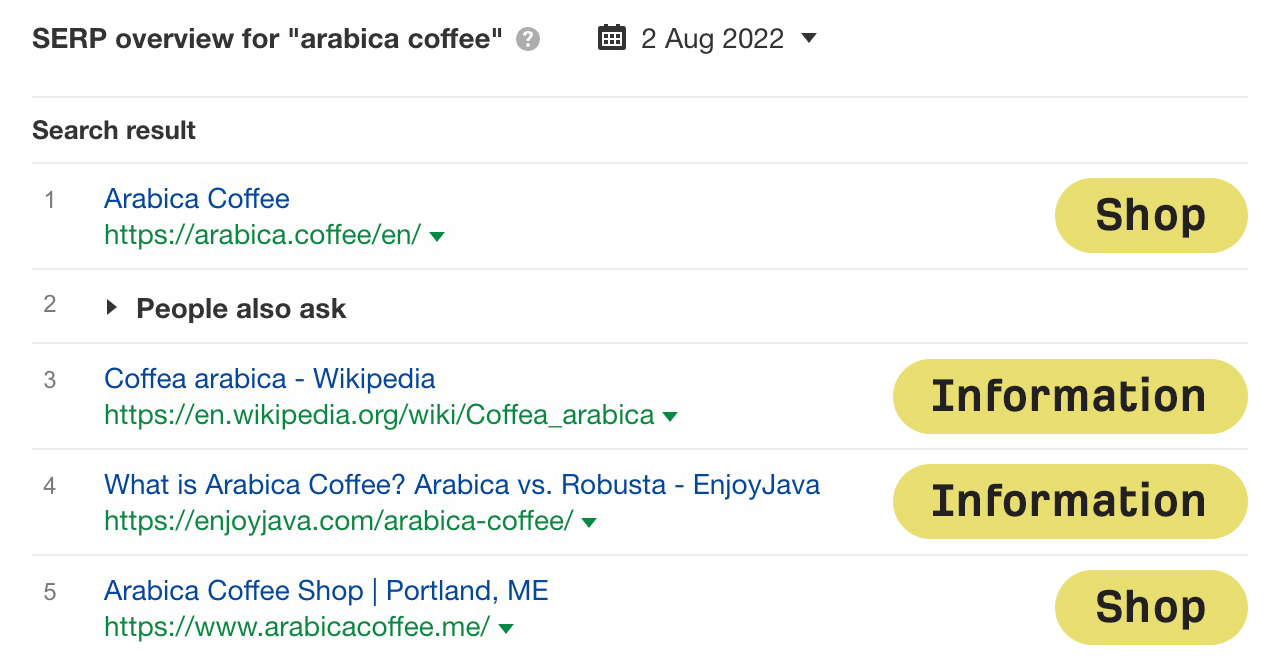
Here we have both: informational pages and online shops. In SEO, we call this a fractured search intent. It means that you may be able to rank for this keyword with any of the two page types.
But pinpointing the right search intent doesn’t end with identifying the right page type for a particular query. Ideally, you want to factor in the following variables:
- Type – For example, blog post, product page, category page, landing page, online tool, etc.
- Format – For example, guide, listicle, news, review, comparison, etc.
- Angle – That’s your unique spin on a given topic.
Here’s a nice example of a dominant content angle. In the search results for “how to make latte,” someone has focused on making a perfect one, while someone else has decided to share how it can be done without an espresso machine.
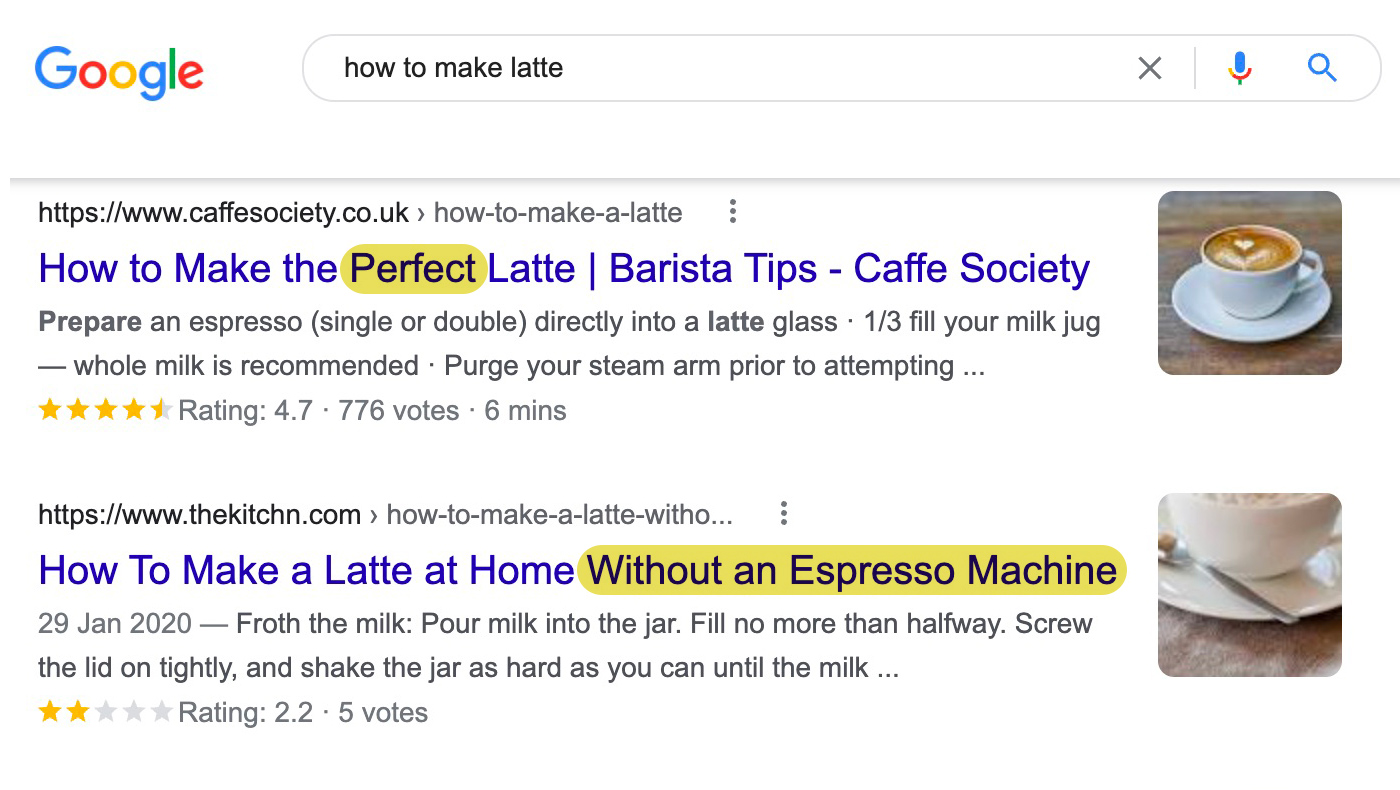
But what if you tried the following angle for your own article: “How to Make a Latte Like Gordon Ramsay.” Maybe some people would consider this to be better than “perfect” and click on your page?
As you can tell, the reason why you need to analyze the search intent of a keyword is to not necessarily follow it to a T.
If you have a strong opinion about the search intent of a given search query but none of the top-ranking pages seem to follow it, give your intuition a chance. Even if your page is different from what’s already there, Google may give it a chance and show it to some of the searchers. And if they happen to like it, your page will secure its spot on the SERP.
Leave a Reply